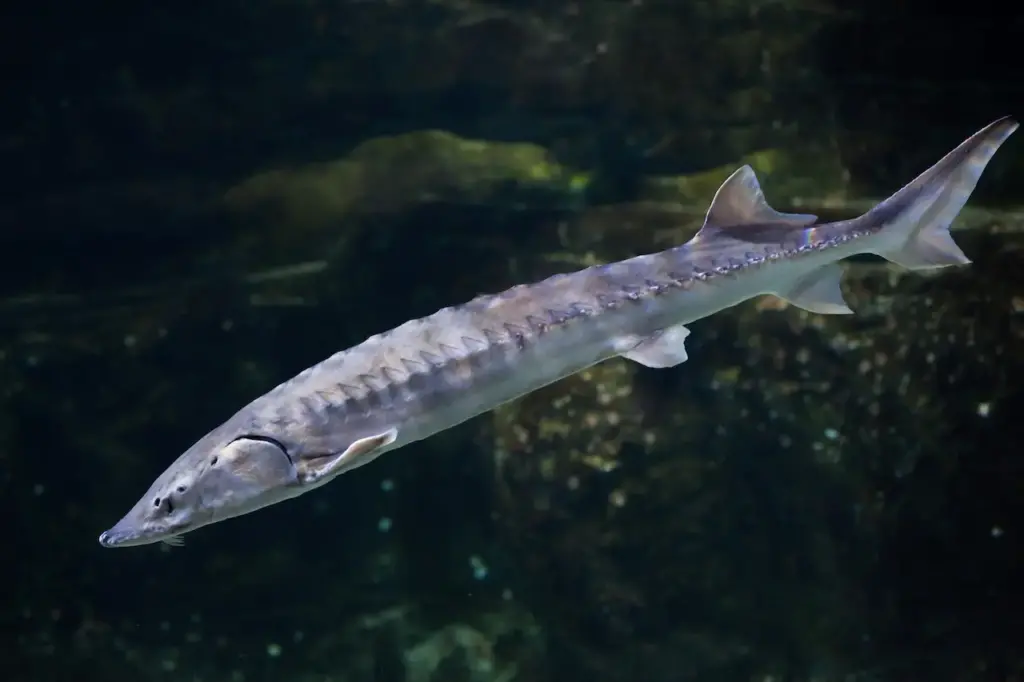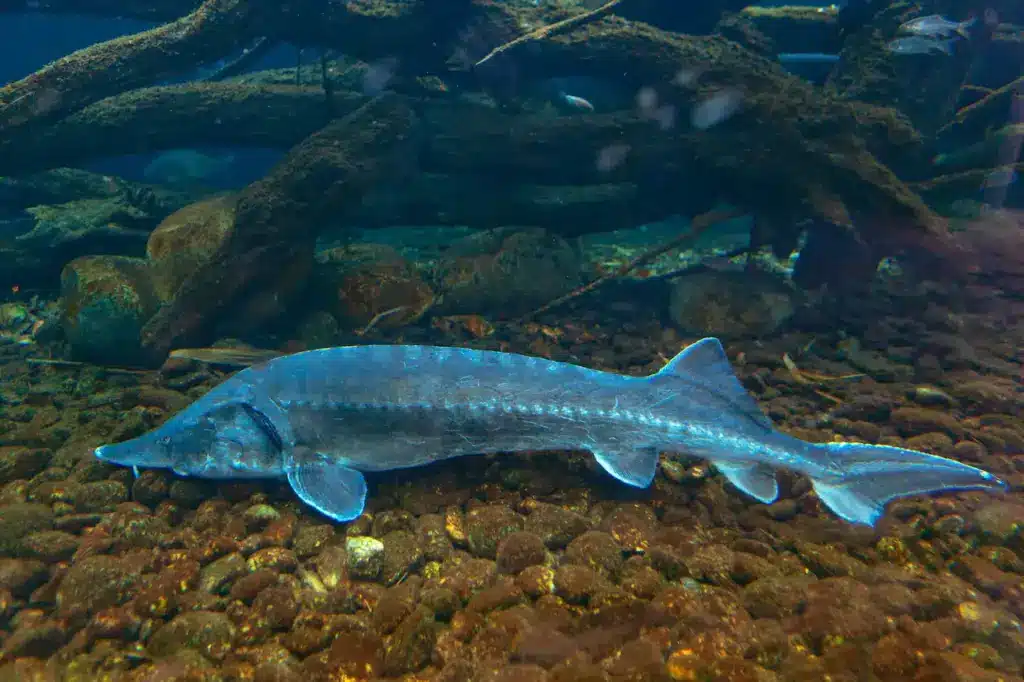Atlantic Sturgeon a New Endangered Species?
Once Common, This Huge (up to 16 feet) Ancient And Prehistoric-Looking East-Coast Fish Swims On The Edge Of Extinction
Certainly there is beauty in the Atlantic sturgeon—but it takes a true connoisseur of natural objects to recognize it. The fish is a huge, snouted, bumpy, bottom-feeding leftover from the Age of the Dinosaurs, and that’s exactly what it looks like: unrefined and, to the superficial eye, unlovely. Growing to sizes of up to 16 feet in length and up to 800 pounds, a sturgeon might seem a little scary if you saw one in the water.

What people have found lovely about the sturgeon is the mass of up to 4 million eggs that each female periodically carries into East Coast rivers from her home in the ocean. Sturgeon are anadromous, which means that, while they live in salt water, they spawn in fresh water. Their eggs are caviar, an increasing rare delicacy that currently sells for $100 or more an ounce. Although it has been illegal to kill Atlantic sturgeon for more than a decade, populations of the once-plentiful fish continue to shrink.
Originally abundant in nearly 40 Eastern rivers, Atlantic sturgeon, along with their smaller relative, the shortnose sturgeon, became the target of an intense caviar and fish-meat hunt in the latter 1800’s. Sturgeon were pulled from rivers by the hundreds, clubbed to death, stacked like cordwood, and stripped of their roe with such ruthless efficiency that their numbers had collapsed by the turn of the 20th century.
Another important early cause of the sturgeon’s decline was the damming of rivers, which prevented the fish from reaching their spawning grounds. Today, the increasingly rare fish are also threatened by poor water quality, injuries from boat propellors and accidental death as “by-catch” in the nets of commercial fishermen who are targeting other species.
The Atlantic sturgeon population is currently in such bad shape that the U.S. National Oceanographic and Atmospheric Administration is advising the government to place the fish on the Endangered Species list. NOAA has suggested “Threatened” status for Atlantic sturgeon in the Gulf of Maine, and the even more serious “Endangered” listing for sturgeon populations elsewhere along the East Coast: Chesapeake Bay, the New York Bight, the Carolinas and the South Atlantic.

This month, as part of the lengthy listing-proposal process, NOAA concluded a period of public comment on the sturgeon’s status. Public meetings on the proposal were held in Maine, New York, Virginia and Delaware. The agency is still accepting written comments from experts and interested members of the public.
There are more than 20 sturgeon species worldwide. Most are under intense pressure from fishing and environmental degradation. In the U.S., the shortnose sturgeon has been in even deeper trouble than the Atlantic sturgeon for many decades, and was declared to be “Endangered” by the federal government in the 1960’s, even before the the Endangered Species Act was signed into law by President Richard Nixon.
In rivers where sturgeon populations are still holding on, such as in Maine’s Kennebec River, the grayish, torpedo-like fish can sometimes be seen launching themselves into the air and crashing back into the water. The reason for this behavior is unknown.
Atlantic sturgeon can live for up to 60 years.
BY PAUL GUERNSEY



